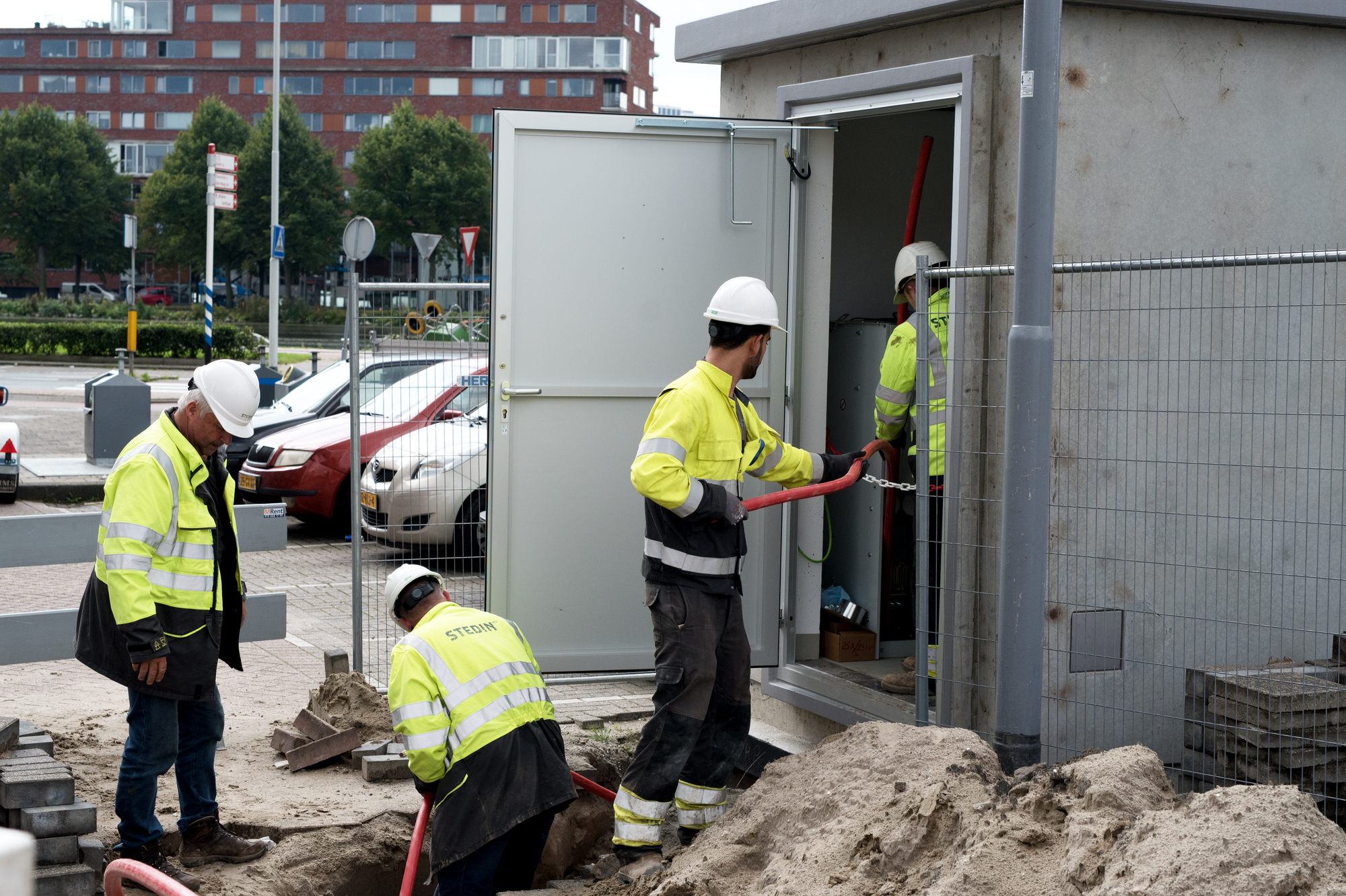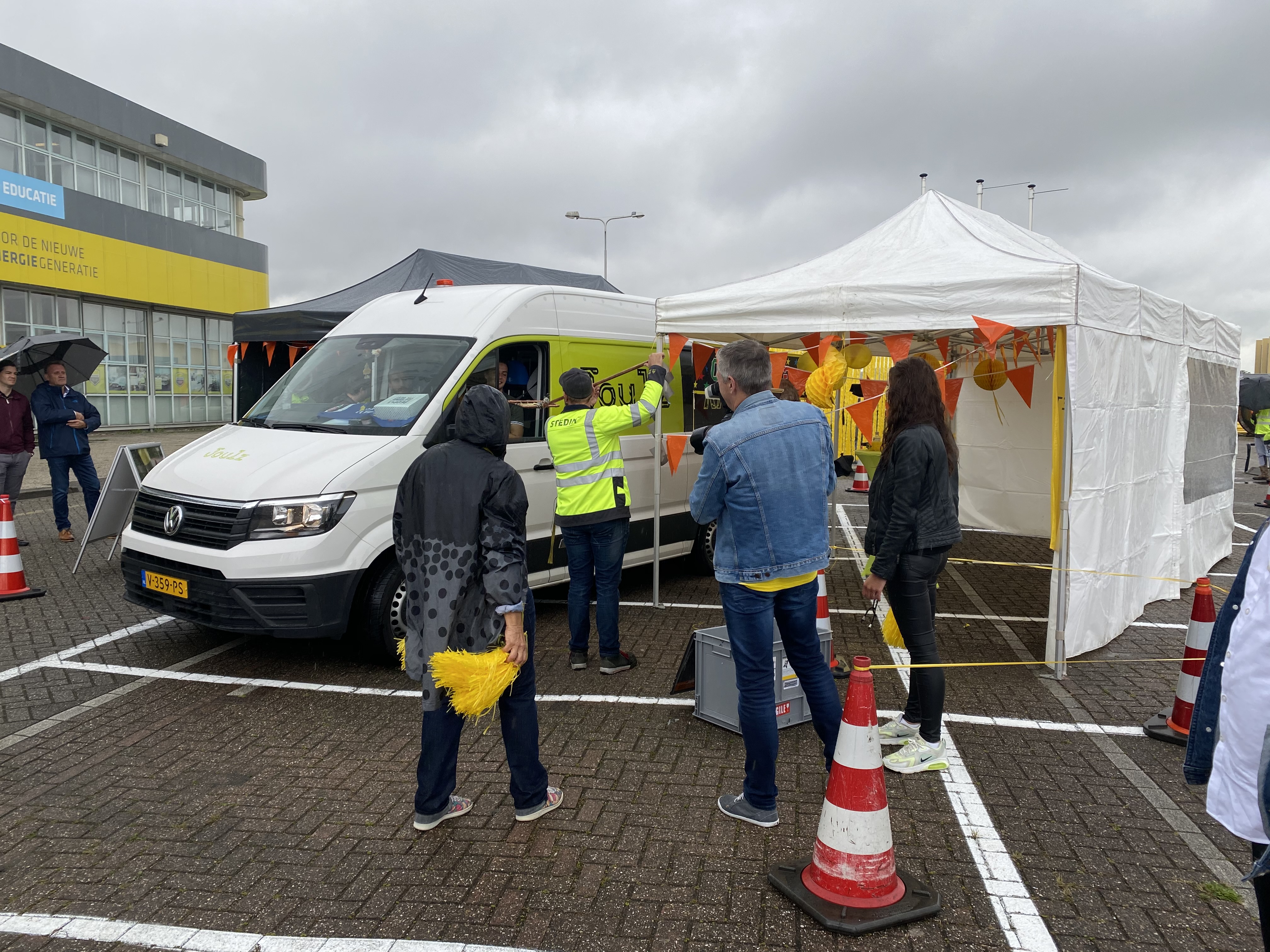Annual summary for 2020
1st quarter
9 January – Stedin's renovated regional office in Delft is reopened. Following a renovation that lasted two years, the building is future-ready, with a modern climate control system, full wall insulation, HR++ double-glazing, LED lighting, charging points for electric cars and a solar roof. The office now has an Energy Label 'A' rating.
31 January – Grid managers Stedin, Enexis, Liander and KPN NetwerkNL sign an agreement to work together in order to avoid excavation damage while laying the fibre-optic network. Excavation damage is the cause of 13.5% of outages in Stedin's service area.
14 February – Stedin and Enduris present the Heat Transition Opening Bid to municipalities in their service area. The information provided by this service supports municipalities in choosing a future-proof heat supply for each individual district.
9 March – Stedin and Oasen begin with the first combined rerouting of water and gas pipelines as well as data and electricity cables for the widening of the A27 motorway between Houten and Hooipolder. This simultaneous approach minimises disruption to the environment and saves costs.
15 March – The Netherlands enters its first full lockdown. As a company in a critically important sector, we have an important responsibility: maintaining the energy supply. Since energy is fundamental to society and the economy, our work continues as far as possible. Naturally, we ensure compliance at all times with government measures and guidelines of the National Institute for Public Health and the Environment (RIVM).

2nd quarter
April – Stedin will purchase thousands of items of SF6-free switchgear in the coming years. SF6 is an insulation medium that is harmful if released into the atmosphere. Stedin needs a lot of new switchgear for expanding its electricity grids and is committed to doing so in the most sustainable way possible.

13 May – The Climate Agreement on Industry Infrastructure Task Force presents its report on the energy infrastructure for making industry more sustainable. This challenging task will require substantial investments and clear commitments. The development of Energy Strategies Clusters (CES) is one of the recommendations adopted by the Minister of Economic Affairs and Climate Policy.
May – Grid manager Stedin is faced with substantial investments in the energy grid due to the energy transition. Stedin consequently expects that it will need an additional €750 million to €1 billion in equity over the coming years for these investments. Stedin relies on its shareholders to provide most of the necessary funding.
3rd quarter
1 July – Stedin is audited by Lloyd's Register for certification for level 4 of the Safety Culture Ladder. This means that Stedin has a proactive safety culture.
10 July – Despite the challenges accompanying the COVID-19 outbreak, Stedin's in-house training school awarded 162 senior secondary vocational education diplomas. The diplomas were handed out during a 'drive-in presentation ceremony'.

18 August – Short-circuiting occurs during maintenance work in a 25kV station at De Constant Rebecqueplein in The Hague. This results in 33,000 customers in the centre and the west of the city being left without power for more than 8 hours. Stedin does everything possible to prevent failures in the grid.
7 September – Enduris gives advance notification of structural congestion. Solar roofs and wind farms on Schouwen-Duiveland and Tholen jointly produce more electricity than is taken up in the area. As a result, Enduris is unable to provide any capacity guarantee for large new solar and wind farms on Tholen and Schouwen-Duiveland until an additional connection to TenneT's national high-voltage grid is available.
28 September – The province of Zeeland becomes the first RES region in the Netherlands to adopt the Regional Energy Strategy 1.0. Enduris and several other stakeholders contributed to this.
4th quarter
10 October – Reinforcing the electricity grid in the Port of Rotterdam can be done more cheaply and efficiently. This outcome emerged from a study by the Port of Rotterdam Authority, Stedin and TenneT into the implications of the energy transition. Demand for energy, including green energy, from the industry in Rotterdam is set to increase significantly in the coming decades.
7 December – Evides Waterbedrijf and DNWG Infra have undertaken joint activities below ground in Zeeland for more than 10 years. This successful cooperation is further reflected and deepened with the signing of an open-ended cooperation agreement, providing a formal framework for effective cooperation below ground and minimising inconvenience to customers and the environment.
11 December – In Uithoorn, hydrogen is carried through the current gas grid to provide temporary heating to 14 specially prepared houses that are due for demolition. This technology is still in its infancy worldwide and is being applied for the first time in the Netherlands by Stedin.

December – Grid managers TenneT, Stedin and Liander jointly expand the electricity grid in Zuidplaspolder in the province of South Holland. Demand for electricity in this area has increased significantly in recent years. The electricity grid is slowly reaching the limit of its capacity as a result. To solve the current electricity grid capacity shortage in this region and meet the growing demand for electricity, the grid managers are building a new high-voltage station alongside the A12 motorway – N219 expressway near Zevenhuizen in the municipality of Zuidplas. The station is scheduled for completion by the end of 2024.
Crucial craftsmanship
In 2020, the term 'vital professions' was more topical than ever. It refers to the work that is key to keeping society in motion, to the essential jobs in critical sectors. Every day, we work on the critical infrastructure. This is infrastructure that is crucial for the functioning of our country. We perform crucial craftsmanship that is decisive for the well-being of others. This craftsmanship is highlighted in this Annual Report.
